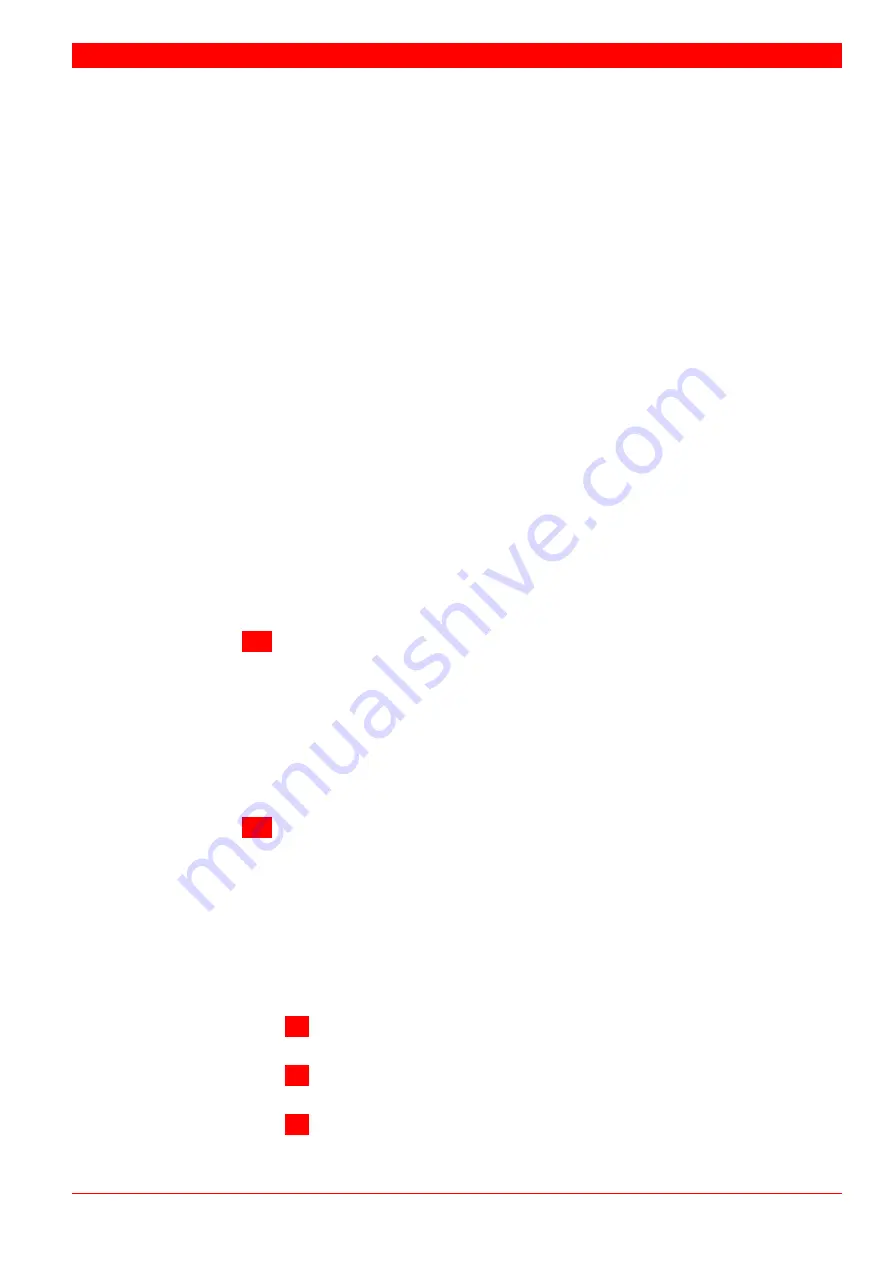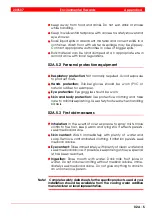
Viscosity.
Should not decrease by more than 20% and not rise by
more than 25% above the guidance value at 100 °C.
Should not decrease by more than 25 % and not rise by more than
45% above the guidance value at 40 °C.
Flash point.
Should not fall by more than 50 °C below the guidance
value. Min. permissible flash point 190 °C (open cup) and 170 °C
(closed cup) . At 150 °C risk of crankcase explosion.
Water content.
Should not exceed 0.3%. A value higher than 0.3%
can not be accepted for longer periods, but measures must be
taken; either centrifuging or oil change.
BN (Base Number).
·
Fuel category A and B:
The minimum allowable BN value of a used oil is 50% of the
nominal value of a new oil.
·
Fuel categories C and D:
The minimum allowable value of used oil is BN 20.
Insolubles.
The quantity allowed depends on various factors. The oil
supplier’s recommendations should be followed. However, an n-Pen-
tane insoluble value above 1.5% calls for attention. A value higher
than 2% cannot be accepted for longer periods.
In general it can be said that the changes in the analyses give a
better basis of estimation than the absolute values.
Fast and great changes may indicate abnormal operation of the
engine or of a system.
c)
Compensate for oil consumption
by adding max. 10% new oil at a
time. Adding larger quantities can disturb the balance of the used
oil causing, for example, precipitation of insolubles. Measure and
record the quantity added.
Attention to the lubricating oil consumption may give valuable
information about the engine condition.
A continuous increase may indicate that piston rings, pistons and
cylinder liners are getting worn, and a sudden increase motivates
pulling the pistons, if no other reason is found.
d)
Guidance values for oil change intervals
are to be found in chap-
ter 04. Intervals between changes are influenced by system size (oil
volume), operating conditions, fuel quality, centrifuging efficiency
and total oil consumption. Efficient centrifuging and large systems
(dry sump operation) generally allow for long intervals between
changes. It is recommended to follow up that the BN value of the
lubricating oil keeps within engine manufacturer’s limits during the
whole oil change interval.
When changing oil the following procedure is recommended:
1
Empty oil system
while oil is still hot. Be sure that oil filters and
coolers are also emptied.
2
Clean oil spaces,
including filters and camshaft compartment.
Insert new filter cartridges.
3
Fill a small quantity of new oil
in the oil sump and circulate with
the pre-lubricating pump. Drain!
200549-01
Fuel, Lubricating Oil, Cooling Water
W20/W32/W46, W46F, 32, 32LN
02 - 15
Summary of Contents for PAAE051728
Page 4: ......
Page 18: ...Appendix B Welding Precautions 200640 00 6...
Page 26: ...01 Main Data Operating Data and General Design 32 200634 01 01 8 W RTSIL 32...
Page 60: ...Appendix A Environmental Hazards 200507 02A 10...
Page 68: ...Page 7 7 Document No 4V92A0645 Rev j...
Page 84: ...03 Start Stop and Operation 32 200402 04 03 12 W RTSIL 32...
Page 98: ...04 Maintenance Schedule 32 200623 01 04 14 W RTSIL 32...
Page 154: ...07 Tightening Torques and Use of Hydraulic Tools 32 200643 01 07 30 W RTSIL 32...
Page 162: ...08 Operating Troubles Emergency Operation 32 200402 01 08 8 W RTSIL 32...
Page 164: ...Specific Installation Data 2005 01 09 2...
Page 178: ...10 Engine Block with Bearings Oil Sump and Cylinder Liner 32 200150 10 14 W RTSIL 32 34SG...
Page 216: ...Appendix A Testing of cylinder tightness 32 200142 A 4 W rtsil 20 32 34...
Page 226: ...13 Camshaft Driving Gear 32 200546 02 13 10 W RTSIL 32...
Page 254: ...15 Turbocharging and Air Cooling 32 200549 10 15 20 W RTSIL 32...
Page 274: ...16 Injection System 32 200627 01 16 20 W RTSIL 32...
Page 280: ...Fuel System 32 200508 07 17 6 W RTSIL 32...
Page 314: ...19 Cooling Water System 32 200050 19 14 W RTSIL 32...
Page 394: ...23 Instrumentation and Automation 32 200115 II 23 60 W RTSIL 32...
















































